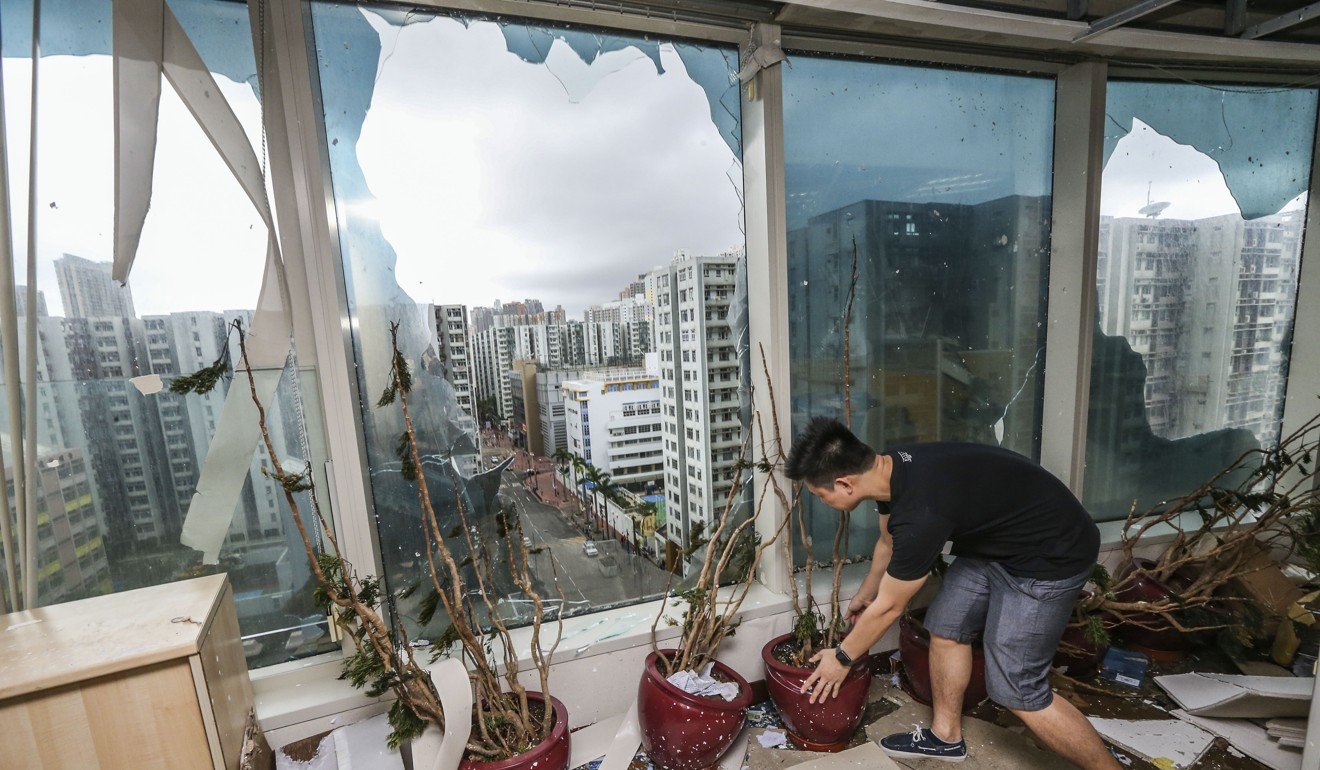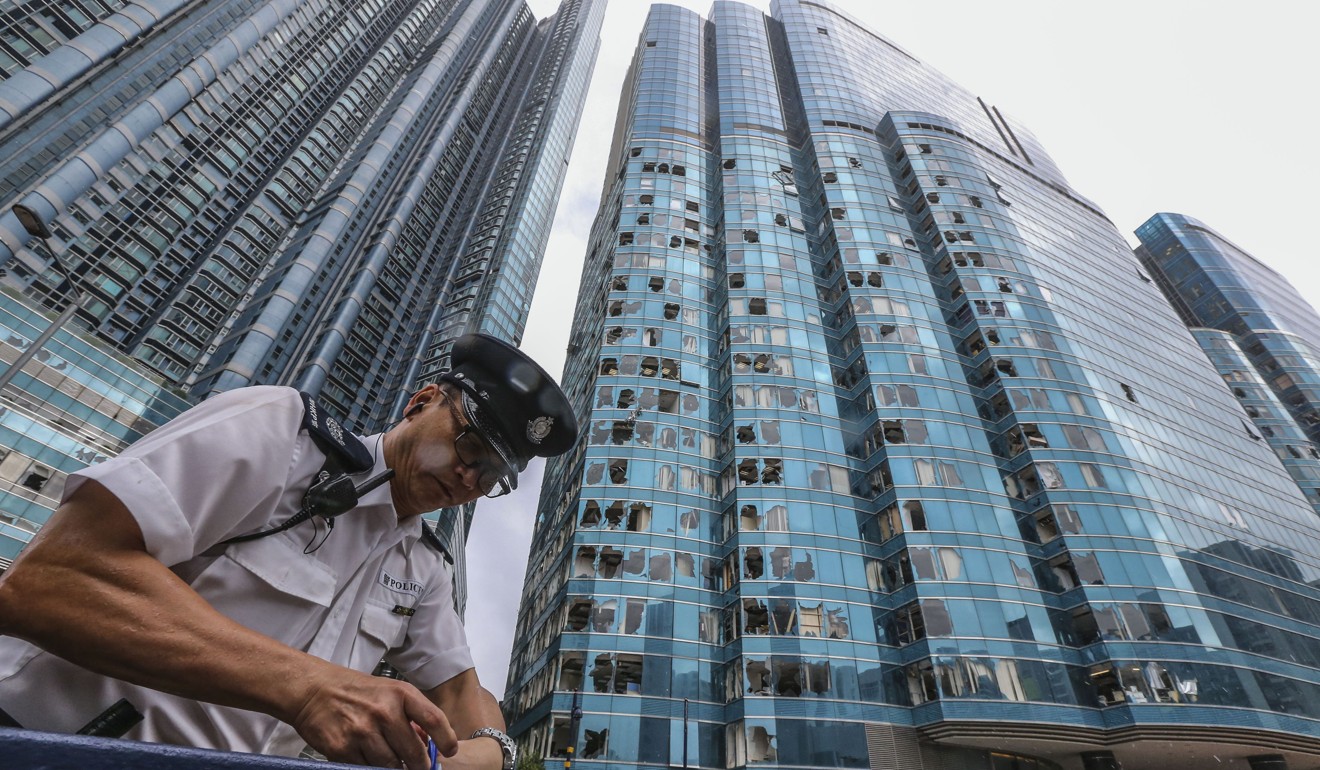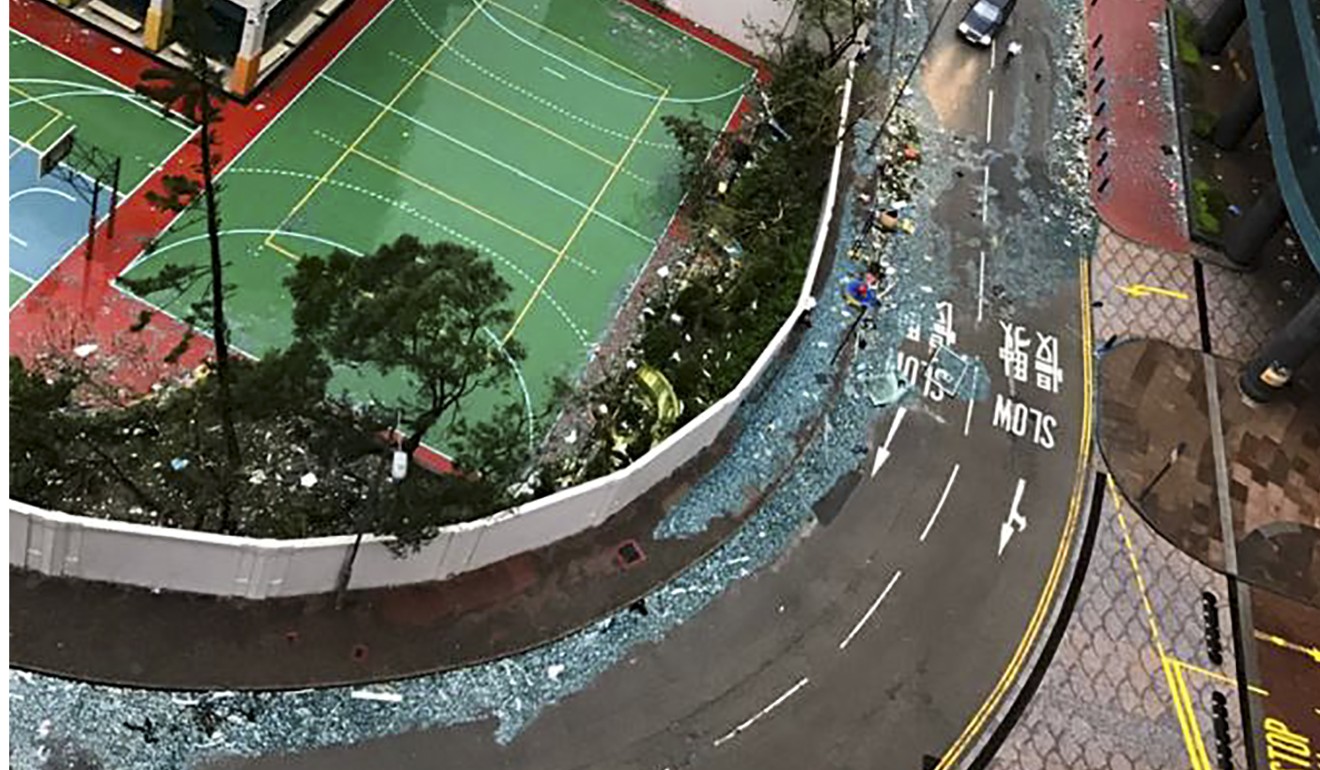
Why some Hong Kong workers thought their offices had been hit by earthquake rather than Typhoon Mangkhut after windows were blown out
Photos showed offices littered with glass shards, smashed cubicles and furniture buried under panelling
“It looks like the scene after an earthquake,” one person said of the collapsed ceiling, broken computer screens and broken desks.
Other photos showed offices littered with glass shards, smashed cubicles and furniture buried under panelling.
“Need to wear a helmet to work,” another person commented about a Facebook photo showing a smashed up office.

At least 100 window panels were blown out of the One Harbourfront development, a 20-storey grade A office tower in Hung Hom owned by CK Asset Holdings.
Documents, large piles of glass and even chairs landed on the streets after Mangkhut battered the city for 10 hours with fierce winds and a record-breaking storm surge.
Mangkhut bill could set Hong Kong record US$1 billion in insurance claims
A Buildings Department spokeswoman said staff members had visited the building and found no obvious risks with the structure. The department said it had issued an order to the owner to hire recognised professionals to investigate the glass curtain walls and submit remedial proposals.
Hutchison Whampoa Properties has not responded to the Post’s inquiry for comment.
Clerk Samuel Chan, 35, who works in an office on the 11th floor of One Harbourfront, showed up as usual. “I just have to be more careful. I saw pieces of glass still swaying out there,” said Chan, who believed his office was not affected.
“Some friends whose office was affected were asked not to come to work.”
Layers of mud, rubble and rubbish: Hongkongers clean up after Mangkhut
A worker at a company on the 18th floor said their office windows were shattered. “This is not the first time it happened. It happened last year as well but the damage was not as serious,” she said, adding that wooden boards were installed temporarily then.

“Papers were blown all over the place. We’re not sure if anything is lost yet.”
A nearby primary school will close for two more days over fears the glass may injure pupils.
Josephine Choi Yuen-ying, principal at Alliance Primary School, Whampoa, said they had already cleaned up the campus.
Hong Kong schools to close another day due to typhoon damage
“We are more concerned about the safety of students on their way to school,” she said.
“Glass shards are hard to clean off the street, and there might be some small shards falling from windows across the street.”
Other prime office buildings in Tsim Sha Tsui, Central and Wan Chai including the International Commerce Centre (ICC), HSBC headquarters and Immigration Tower also had windows smashed.
A spokesman for ICC owner Sun Hung Kai Properties confirmed that 28 curtain window panels were broken on lower- to middle-zone floors of the 118-storey building in West Kowloon, which is home to many financial firms.
Clean-up begins in Macau after Typhoon Mangkhut
“The building management team at ICC are inspecting the damaged offices and will arrange proper replacement as soon as possible,” he said.
A Morgan Stanley spokesman said the investment bank’s businesses were operating normally on Monday after suffering “limited damage” to its offices in the ICC.

The government received 400 to 500 reports about home damage, including broken windows, Secretary for Security John Lee Ka-chiu said on Monday.
It’s official: Typhoon Mangkhut most intense storm on record
Chinese University adjunct professor Bernard Lim Wan-fung, a former president of the Institute of Architects, said the amount of broken windows on One Harbourfront showed that the structure failed, and that the Buildings Department should conduct an independent investigation.
“This is not just a problem about private buildings. It's about public security,” Lim said, adding that the windows needed to comply with the department’s wind code.

“If the windows were designed properly and installed with proper workmanship, they should have been fine” in the storm, Lim said.
Veteran surveyor Vincent Ho Kui-yip, a former president of the Institute of Surveyors, said windows were usually more likely to be smashed by flying objects during a storm.
“I think [on Sunday] there were lots of small hard objects flying,” Ho said. “When one window was hit, its pieces might have continued to hit other windows nearby.”
Even if the windows were not hit by objects, they could be broken by strong wind, he said.
“The overall design should be able to sustain the wind pressure, but at some specific position, it may surpass the average wind pressure,” he said observing that most broken windows were at one corner.
Regarding why many windows from lower floors were smashed, Ho said that normally the higher floors would face greater wind pressure. He said one possible reason for this was “the shards from the broken windows from higher floors fell and smash the windows on the lower floors.”
A window panel in a hotel on Salisbury Road in Tsim Sha Tsui also smashed and the window panels at a restaurant in Kwai Chung were blown out, according to online videos.

